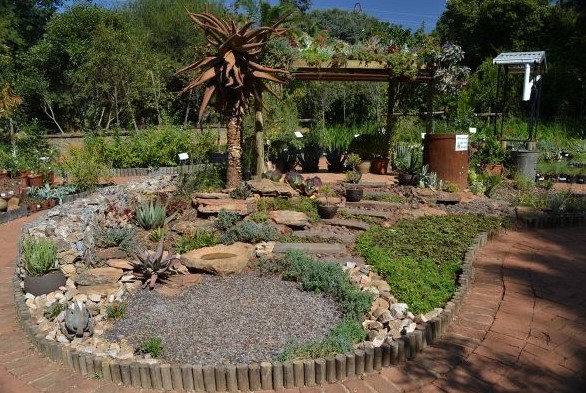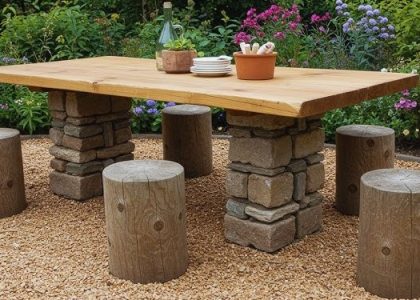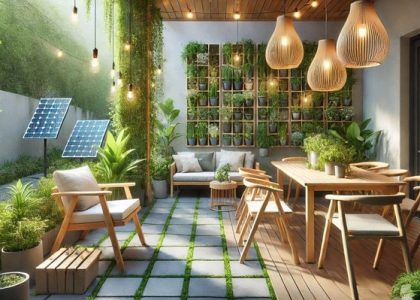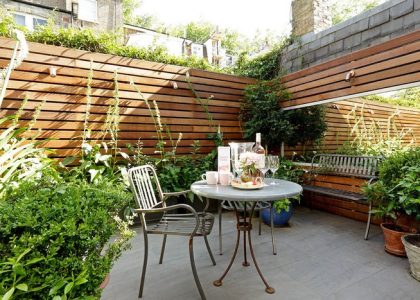
In today’s world, where climate change and water scarcity are becoming increasingly concerning, adopting water-saving garden tips is not just a trend—it’s a necessity. Landscaping and gardening can consume significant amounts of water, especially in regions where rainfall is minimal. However, with a little planning and the right techniques, it’s possible to maintain a beautiful, thriving garden while minimizing water waste. In this article, we will explore various strategies to create a water-efficient garden that promotes sustainability without sacrificing beauty. From choosing the right plants to proper irrigation techniques, these water-saving garden tips will help you create an eco-friendly and cost-effective outdoor space.
1. Choose Drought-Tolerant Plants
The most fundamental step in creating a water-efficient garden is selecting plants that are naturally adapted to dry conditions. These plants, often referred to as drought-tolerant or xerophytes, require minimal water once established and can thrive even in periods of low rainfall. Native plants, in particular, are a great option as they are adapted to your local climate and soil, making them less dependent on irrigation.
Some examples of drought-tolerant plants include:
- Lavender: This fragrant herb is perfect for sunny gardens and requires little water once established.
- Succulents: Succulents such as aloe vera, agave, and sedum store water in their leaves, making them ideal for dry climates.
- Coneflower (Echinacea): Known for its vibrant blooms, this perennial plant is drought-resistant and thrives in poor soil conditions.
- Blanket Flower (Gaillardia): With its bright, fiery flowers, this hardy perennial is drought-tolerant and can handle periods of extreme heat.
By carefully choosing drought-resistant plants, you can significantly reduce your water usage while still maintaining a colorful, vibrant garden.
2. Optimize Watering Techniques
Watering practices can have a huge impact on water conservation in the garden. Traditional methods such as overhead sprinklers can waste large amounts of water due to evaporation and runoff. To maximize the efficiency of your watering system, consider these techniques:
Drip Irrigation
Drip irrigation systems deliver water directly to the roots of plants, minimizing water waste by avoiding evaporation and runoff. These systems use a network of tubes and emitters to slowly release water at the base of each plant. Drip irrigation is ideal for garden beds, flower borders, and vegetable patches where water is needed directly at the root zone.
Soaker Hoses
Soaker hoses are porous hoses that allow water to seep out slowly, providing even moisture to garden plants. These hoses can be laid on the soil’s surface or buried under mulch to help reduce evaporation. They are especially useful for rows of plants, such as vegetable gardens, where consistent watering is needed.
Watering in the Early Morning or Late Evening
To minimize water loss from evaporation, it’s best to water your garden early in the morning or late in the evening. During these cooler parts of the day, the sun’s intensity is lower, and the air is less dry, allowing the water to soak into the soil more effectively. Watering in the heat of the day causes much of the water to evaporate before it can benefit the plants, leading to unnecessary water waste.
Use of Watering Cans for Precision
Instead of using a sprinkler or hose, you can also opt for a more targeted watering method using a watering can. This allows you to apply water only to the plants that need it, avoiding over-watering of non-essential areas like paths or weeds.
3. Mulching to Retain Moisture
One of the simplest and most effective water-saving garden tips is the use of mulch. Mulch, whether organic (such as wood chips, straw, or compost) or inorganic (like gravel or rubber), helps to retain moisture in the soil and reduces the need for frequent watering. Mulch works by creating a barrier that slows the rate of evaporation from the soil, keeping the roots of your plants hydrated for longer periods.
In addition to reducing water loss, mulch also provides other benefits, such as:
- Weed suppression: Mulch helps to block sunlight from reaching weeds, making it harder for them to grow and compete with your plants for water and nutrients.
- Temperature regulation: Mulch keeps the soil cooler during hot weather and warmer during colder months, reducing temperature stress on plants.
- Soil improvement: As organic mulch breaks down, it enriches the soil with nutrients, improving its structure and water-holding capacity.
For maximum benefit, apply a thick layer of mulch around the base of plants and in between garden rows to help keep the soil consistently moist.
4. Create a Rain Garden
A rain garden is a specially designed garden that captures and absorbs rainwater runoff from rooftops, driveways, or other hard surfaces. By strategically planting water-loving plants in areas where rainwater collects, you can divert excess water from storm drains and help it infiltrate the soil, where it can be used by plants. Rain gardens are an excellent way to make use of natural resources while reducing water demand from your irrigation system.
Key components of a rain garden include:
- Plant Selection: Choose plants that thrive in wet conditions, such as ferns, cattails, and rushes. These plants will help absorb excess water and prevent erosion.
- Shallow Depression: Create a shallow depression or basin to direct water toward the garden. This ensures that water stays in the garden long enough for plants to absorb it.
- Soil Preparation: Incorporate well-draining soil to ensure that water doesn’t stagnate and that excess water can still flow into the ground.
Rain gardens can be placed in low-lying areas of your yard or around downspouts to capture water runoff, helping to reduce the strain on your municipal water system and keeping your garden lush and hydrated.
5. Improve Soil Quality
The quality of your soil has a direct impact on how much water your garden retains. Well-draining soil that has been enriched with organic matter will retain moisture better than sandy or compacted soil. Adding compost, mulch, and other organic matter to your soil will increase its water-holding capacity, reducing the need for frequent irrigation.
Soil amendments not only improve water retention but also provide essential nutrients for plant growth, leading to healthier, more resilient plants that require less water to thrive. Be sure to test your soil regularly and adjust its composition to meet the needs of your garden.
Implementing water-saving garden tips is an essential step in creating a more sustainable and eco-friendly landscape. By choosing drought-tolerant plants, optimizing watering techniques, using mulch to retain moisture, creating rain gardens, and improving soil quality, you can significantly reduce your water consumption while maintaining a beautiful and thriving garden. Not only will these techniques help conserve valuable water resources, but they will also create a more resilient landscape that requires less maintenance and input. By adopting these water-efficient strategies, you can contribute to environmental conservation while enjoying a beautiful garden that flourishes year-round.




